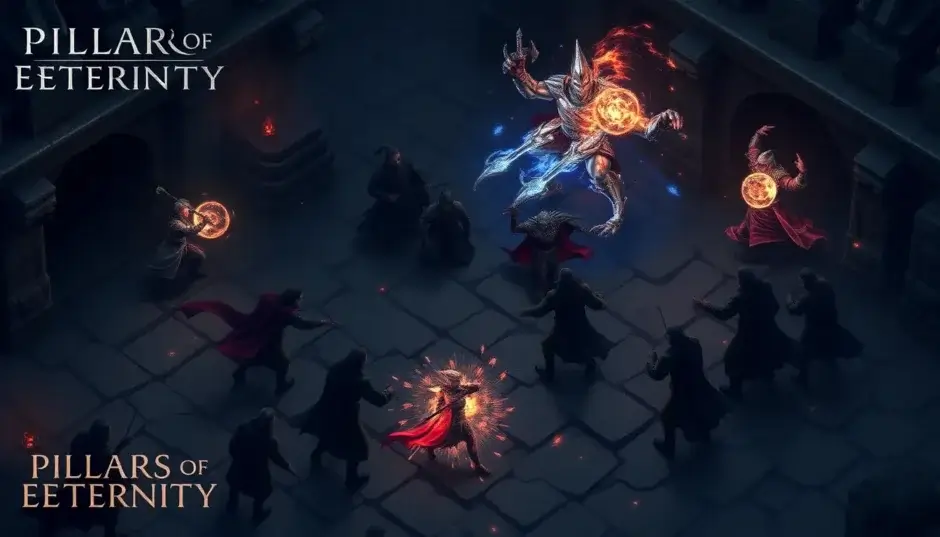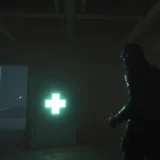Summary: Obsidian Entertainment has unexpectedly announced a public beta for a new Pillars of Eternity turn based mode, available to PC players starting November 5th. This exciting addition, inspired by the success of the same mode in Pillars of Eternity II: Deadfire, promises significant mechanical improvements for a refreshed tactical experience. Dive into how the Pillars of Eternity turn based combat fundamentally changes gameplay.
It’s quite the surprise, isn’t it? Over a decade after Obsidian Entertainment first launched its critically acclaimed isometric fantasy RPG, Pillars of Eternity, the game is receiving a massive, unexpected patch to introduce a dedicated turn-based mode. Announced fresh on the heels of massive releases like Avowed, this move shows a deep commitment to iterating on their classic titles, much like they did with the sequel. Game Director Josh Sawyer, known for his recent work on Pentiment, shared insights on what this addition means for returning Watchers.
This exciting feature is rolling out via a public beta starting November 5th for players on Steam and Xbox PC. Fans who got a taste of tactical combat in Pillars of Eternity II: Deadfire will recognize the foundation, but Obsidian promises crucial enhancements shaped directly by community feedback from that prior implementation.
Diving Deep into the Pillars of Eternity Turn Based Mode
Switching from the traditional ‘Real-Time with Pause’ (RTwP) combat to a true turn structure is no small feat, especially for a game originally designed around the latter system. As detailed by Obsidian in their announcement, the new Pillars of Eternity turn based mode isn’t just a simple pause-and-click interface; it’s a fundamental reworking of combat flow, directly addressing previous fan critiques.
Game Director Josh Sawyer has often stressed his preference for turn-based systems, believing they allow for more intricate combat design where complex character stats can truly shine without being obscured by the speed of RTwP. This new implementation aims to capture that strategic depth.
Here are the key mechanical changes players can expect when engaging with the pillars of eternity turn based combat system:
- Unbound Turns and Speed Integration: Unlike a fixed action-per-round system, turns are now intrinsically tied to a character’s overall speed. This is a clever way to maintain the value of RTwP attributes and mechanics within the turn structure, ensuring that Dexterity and other speed-related stats remain relevant.
- Smarter Free Actions: To speed up the tactical flow and reduce unnecessary clicking between crucial decisions, actions such as swapping weapons, drinking potions, or toggling modals are now considered Free Actions. To maintain balance, each type of free action is limited to one per character, per turn.
- Pacing Through Lethality: A major concern with turn-based versions of RTwP games is the potential for combat to drag. Obsidian has countered this by significantly increasing combat lethality for both players and enemies, ensuring that encounters remain tense and impactful without becoming overly drawn out.
- Flexible Mode Switching: Players won’t be locked in. You can select the pillars of eternity turn based mode when starting a new game alongside your chosen difficulty. Crucially, you can also swap freely between RTwP and Turn-Based Mode within the game options menu, with Obsidian also exploring a direct HUD toggle for maximum convenience.
As this is a public beta, Obsidian has clearly stated that players should anticipate bugs and ongoing adjustments as they refine the feature. The testing period is expected to run for ‘some time’ before the final, polished version is released.
The Legacy and Inspiration for Pillars of Eternity Turn Based
Pillars of Eternity launched in 2015 to massive acclaim, scoring a 9/10 from IGN, who called it ‘one of the best RPGs since Baldur’s Gate.’ The original combat, the classic RTwP system, was a deliberate nod to the Infinity Engine games that inspired its development—a style that many of the game’s initial Kickstarter backers preferred.
However, in hindsight, Game Director Josh Sawyer has noted that the RTwP system was largely a concession. When Obsidian later introduced a turn-based mode to Pillars of Eternity II: Deadfire in 2019, it proved incredibly popular, shifting player preference toward a more deliberate tactical rhythm.
Obsidian’s development history after the initial PoE release included the launch of Pillars of Eternity II: Deadfire, followed by the acquisition by Microsoft later that year. Since then, the studio has been highly prolific with titles like The Outer Worlds and Grounded, cementing its position as a key developer within Xbox Game Studios.
This move to implement a full pillars of eternity turn based structure in the original game suggests a desire to make this foundational title more accessible to players who have become accustomed to the tactical pace popularized by modern CRPGs, like the paradigm-shifting Baldur’s Gate 3.
Mechanics Deep Dive: From Recovery Time to Initiative
To truly appreciate the scope of this update, it helps to understand the core differences between the two combat styles in the world of Eora. While the RTwP relies heavily on ‘Recovery Time’ to dictate action frequency, the Pillars of Eternity turn based system translates this into something more akin to traditional tabletop mechanics.
In the turn-based framework, combatants are queued based on their Initiative, which is closely derived from the original Recovery Time values. Lower Initiative means acting sooner in the round. Characters get one principal action per round, which can be spent on a Standard Action or a Cast Action.
As detailed by the community wiki, the mechanics shift significantly:
- Action Economy: Instead of simultaneous actions resolved by speed, character turns are strictly sequential. This allows for much clearer use of stats like Dexterity, which now influences movement (Stride) more directly since Action Speed is less dominant.
- Spell Casting: Spells with long cast times are now resolved over multiple turns, landing their full effect based on the turn order queue, making positioning and timing far more critical.
- Duration Conversion: Effects over time (DoTs, HoTs) are converted from real-time ticking to discrete ‘rounds’ of combat, usually equating one round to six seconds of real-time for a baseline balance.
Contrast this with the older RTwP style, where characters all act simultaneously based on their Recovery Time, durations tick down in real-time, and Party Member AI can automate many actions. The pillars of eternity turn based mode strips away the AI automation and the RTwP Re-Targeting option, enforcing a more hands-on, deliberate approach.
Lessons Learned from Deadfire and the Future of Eora
The decision to bring a full pillars of eternity turn based option to the first game appears heavily influenced by the development journey of the sequel. The initial Deadfire turn-based implementation was a beta patch (Patch 4.1) added well after launch. While celebrated, player feedback pointed out areas where the conversion wasn’t perfectly smooth because the core game was still fundamentally built for speed.
Obsidian is clearly applying these lessons. Josh Sawyer noted that for the original PoE, while it wasn’t designed for this structure either, they are striving for an ‘action economy [that] is a lot more accurate to the real-time with pause game,’ aiming to match the spirit of the original mechanics even in a turn-based wrapper. They are making sure the number of turns a character gets is directly tied to their inherent speed attribute rather than being rigidly tied to the abstract ‘round’ structure.
There is also immense speculation regarding the continuation of the critically beloved series. Sawyer has publicly stated he would ‘love to develop Pillars of Eternity 3’—but only if it had a budget comparable to that of Baldur’s Gate 3. And, critically, he added that if he were to make PoE 3, he would absolutely employ a pillars of eternity turn based combat structure.
This massive update to the first Pillars serves as both a gift to existing fans and perhaps a proof-of-concept or system refinement phase for what a potential sequel could look like. While the beta focuses on PC (Steam and potentially other platforms), console players who might prefer the tactical control of pillars of eternity turn based combat are certainly hoping this trend continues across Obsidian’s portfolio.
This 10th-anniversary patch isn’t just about combat modes, however. It also brings general quality-of-life improvements, including better support for Mac and Linux (via Proton) users, and streamlined access to Kickstarter rewards and achievements for GOG and Epic storefront players. Numerous audio, visual, and mechanical fixes are also part of this comprehensive update.
For those veterans who found the high-speed party management of Pillars of Eternity daunting, or for newcomers drawn in by the tactical depth of modern CRPGs, this surprise addition breathes new life into the original Eora adventure. The chance to revisit the classic story with a refined, Pillars of Eternity turn based system is a compelling reason to make a fresh start in Caed Nua, even a decade later. The community response, as expected, has been enthusiastic, proving the enduring love for Obsidian’s deep, lore-rich RPG universe.
Images sourced from various gaming news outlets and Obsidian Entertainment announcement materials.
 TOOL HUNTER
TOOL HUNTER


